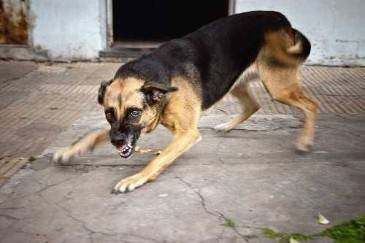As much as we love our furry friends, dogs can sometimes exhibit unpredictable behavior, leading to unfortunate accidents, especially involving children. In the state of Texas, dog bite incidents are a serious concern, and understanding the special considerations surrounding these incidents is crucial for ensuring the safety of children. Rush & Gransee, L.C. is committed to shedding light on this matter and providing valuable information to parents and guardians to help protect their children from potential dog bite accidents.
Texas Dog Bite Laws
Texas has specific laws in place to address dog bite incidents, and understanding these laws is essential for anyone dealing with such unfortunate incidents. In Texas, dog owners are generally held liable for any injuries or damages caused by their dogs biting or attacking another person. This liability extends to both property damage and personal injuries. However, there are some important considerations when it comes to dog bite accidents involving children.
Special Considerations for Children
Children’s Vulnerability
Children are particularly vulnerable to dog bite accidents due to their size and lack of experience in dealing with animals. Their natural curiosity and playfulness may lead them to approach dogs without fully understanding the potential risks. Additionally, children may unintentionally engage in behaviors that dogs perceive as threatening, causing a defensive reaction from the animals.
Provocation
Texas follows a “one bite rule,” which means that dog owners may not be held liable for the first bite if they had no reason to know that their dog would act aggressively. However, when it comes to children, this rule may be interpreted differently. Courts often consider that children might not fully understand the risks involved, and therefore, dog owners are held to a higher standard of care regarding their pets’ behavior around children.
Premises Liability
In some situations, a dog bite incident may occur on someone else’s property. Texas follows the premises liability law, which means that property owners can be held liable for injuries that occur on their premises if they knew or should have known about the dangerous condition. This principle applies to dog bites as well, and if a property owner knows that a dog on their premises has a history of aggressive behavior, they should take appropriate measures to protect children and visitors from potential harm.
Steps to Prevent Dog Bite Accidents Involving Children
Supervision
Supervision is the most critical factor in preventing dog bite accidents involving children. Parents and guardians should always closely monitor interactions between children and dogs, especially if the child is unfamiliar with the animal. Even if the dog is known to be friendly, it’s essential to be cautious and ready to intervene if any signs of aggression or discomfort arise.
Education
Education plays a vital role in preventing dog bite accidents. Teaching children about the proper ways to approach and interact with dogs can reduce the risk of negative encounters. Children should be instructed to avoid disturbing dogs that are eating, sleeping, or caring for their puppies. Moreover, children should be taught not to approach unfamiliar dogs without the owner’s permission.
Dog Training and Socialization
Dog owners have a responsibility to ensure that their pets are well-trained and socialized. Proper training can help prevent aggressive behavior and ensure that dogs respond appropriately to different situations, especially around children. Socializing dogs from an early age can also positively influence their behavior towards unfamiliar people, including children.
Secure Fencing
If you have a dog on your property, it is essential to have a secure and adequate fence to prevent potential dog bite incidents. This not only protects children outside the property but also keeps the dog safe from possible harm or provocation.
Recognizing Signs of Aggression in Dogs
Aside from taking preventive measures, it is essential for parents, guardians, and children to recognize signs of aggression in dogs. Understanding these signs can help individuals avoid potentially dangerous situations and react appropriately if faced with an aggressive dog. Some common signs of aggression in dogs include:
- Baring Teeth: When a dog bares its teeth, it is a clear indication of discomfort or aggression. This behavior is a warning sign that the dog feels threatened and is ready to defend itself.
- Growling and Snarling: Growling and snarling are vocal signs of a dog’s discomfort or aggression. These vocalizations can escalate into a bite if the dog perceives a threat.
- Stiff Body Language: A tense or stiff body posture in dogs indicates that they are on high alert and may act defensively.
- Raised Hair: When a dog’s hair stands up on its back, it is referred to as “raised hackles.” This physical change is often seen when a dog is feeling threatened or is in an aggressive state.
- Avoidance or Hiding: Sometimes, dogs may try to avoid a perceived threat by moving away or hiding. While this behavior may seem non-threatening, it is essential to respect the dog’s signals and give it space.
Dog bite accidents involving children can have severe and lasting consequences. In Texas, understanding the laws and special considerations surrounding these incidents is crucial for ensuring the safety of children and holding negligent dog owners accountable. Rush & Gransee, L.C. is dedicated to providing legal assistance and guidance to parents and guardians who have experienced such unfortunate incidents.
If your child has been involved in a dog bite accident, don’t hesitate to contact our experienced legal team for a confidential consultation. We are here to advocate for your rights and ensure that justice is served. Together, let’s work towards creating a safer environment for children and preventing future dog bite accidents in Texas.